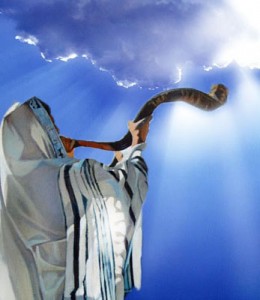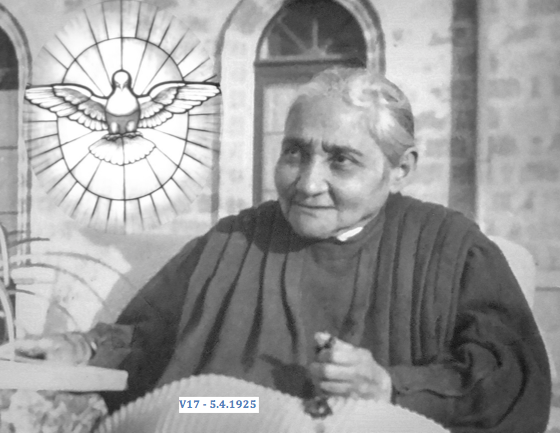STARTS AT SUNDOWN TODAY

The Feast of Trumpets or Rosh Hashanah
Lev 23:24 Speak unto the children of Israel, saying, In the seventh month, in the first day of the month, shall ye have a sabbath, a memorial of blowing of trumpets, an holy convocation.
In this period of slightly less than 30 days, the moon goes from darkness to light and back to darkness again. This is not a haphazard occurrence attributed to evolution or science. God planned it for many reasons, one being as a picture of resurrection and renewal. With each cycle of nearly 30 days the ancient rabbis understood that the moon was being reborn or “born again.”
NEW MOONS
In Yeshua’s day, the moon was so important that a Jewish festival was proclaimed at the beginning of every month. This was called the New Moon Festival and in the apostle Paul makes note of it (Colossians 2:16). King David provoked King Saul over it (1Samuel 20:5). In the millennium all nations will celebrate the New Moon festival every month Isaiah 66:23. It is obvious from the Scriptures that in the millennium God has no plans to do away with His system.
Since it is so important, exactly what is a new moon? It is the opposite of a full moon. Every month the moon goes through a complete cycle of renewal called Rosh Chodesh, the head or beginning of the renewed month. Twelve times a year on Rosh Chodesh, the moon always starts off with its disk being very dark to the naked eye. Over the course of 15 days it gets brighter and brighter until it finally reaches a full white-faced disk or full moon. Over the next 15 days it becomes darker and darker and finally becomes invisible to the naked eye again.
The ancient rabbis saw a great lesson in this. Just as the moon has no light of its own but receives its light from the sun, so we too have no light of our own and must receive it from God. As the moon goes through a near 30-day cycle of dark to light to dark, so we need constant spiritual renewal and repentance. Like the moon, we too must be reborn or “born again” into the Messiah and constantly renewed through REPENTANCE. This is why God called the moon a faithful witness in the sky Psalm 89:37. We have lost touch with God’s faithful witness in the sky. But Yeshua, and the people of His day never lost touch with it. The new moon was necessary for the Jewish calendar, and it was also a monthly festival celebrated with a feast fit for a king!
So, when Yeshua said His famous words Matthew 24:36, it had far-reaching implications. Here are the words of Yeshua in Matt 24:36 But of that day and hour knoweth no man, no, not the angels of heaven, but my Father only.
Taking phrases out of Jewish context can lead one to misunderstand His words. For example, in many places of the New Testament. Yeshua knew the future and talked about it openly. In one instance He warned His disciples about their future saying, “See, I have told you ahead of time” Matthew 24:25. His context concerned the tribulation, the destruction of the Temple, the rise and fall of false messiahs (antichrists), etc. If He knew the future in Matt 24:25, and the context is about the Day of Trouble. Why would He suddenly speak as though He did not know the future in the same context just 11 verses later in Matt 24:36? Was He confused? Or was He making perfect sense in light of the customs of the Jews? The phrase, “Of that day and hour no man knows” refers to the sanctification or setting apart of the new moon.
Twelve times a year a new Jewish month (Rosh Chodesh) was announced to the people. We have no system like it today. We look at a calendar to determine the first of the month; the Jews, however, looked at the moon. This system of time keeping was given to the Jews to know precisely when the Holy Feasts of the Lord would fall. The moon was the faithful Jewish calendar or witness in the sky. And 12 times a year was sanctified as the basis of the Jewish calendar.
To correctly announce the first day of the month, established by the new moon, was one of the Sanhedrin’s greatest responsibilities. They had to ensure the people knew when the first of the month began 12 times a year! Therefore God said to the leaders of Israel:
Leviticus 23:4 These are the feasts of the LORD, even holy convocations, which ye shall proclaim in their seasons.
As soon as the new moon was announced, the first day of the month began. In Hebrew, those observances have always been called “appointed times” or moedim, literally “a sacred and set time”. From God’s perspective, the appointed times belong to Him and no one has the authority to change the celebration of an appointed time. To do so was a serious matter and great sin. Appointed times had to be kept because of their Messianic implications.
Also notice the phrase, “holy convocation”. God’s appointed times are actually “holy rehearsals” set apart to reflect events in the Messianic era. God said to the people, “Pay attention! On this day I am going to do something! Wake-up! The Jews were to know and practice all of God’s holy convocations. This is the essence of Paul’s words that the Shabbat, new moons and festivals, “are a shadow of things to come to the body of Messiah” (Colossians 2:17).
Twice a year, in the spring and fall, there were several appointed times and specific days of holy convocation dedicated to the Lord. The new moon was the key in being able to fulfill those set times, holy convocations and rehearsals. For example, when the new moon was announced on the first day of Nisan, also called Aviv, or Abib, the people knew when to observe the holy convocations and set times.
Again, once the Sanhedrin set Rosh Chodesh, or the beginning of the new month by sighting the new moon, the rest of the festivals were calculated. However because of the 29.5 day cycle, and a 365.25 day year some years would need a 13th month. Determining the new moon in the FIRST month of Abib or Nissan was the most important for that determination set the appointed times or Feast of the Lord for the whole year. That first month called Nissan was also called Abib. When the BARLEY WAS ABIB. When the barley would be abib means that it has grain heads at the time of the new moon in Jerusalem. This can also be effected by a lack of sufficient rain. With no rain the barley seeds would not germinate. The barley would not be seen abib if there was no rain. Then, all the feasts of the Lord would be postponed by a month in that year.
The seventh month, Tishri, was particularly important because it was the only month that had a holy convocation or appointed time on the first day of the month. This posed a unique problem. The first day of Tishri was the appointed time called Rosh Hashanah, the Feast of Trumpets (Leviticus 23:24). Yet no one could begin observing the festival until they heard those famous words from the President of the Sanhedrin, “Sanctified!” No one in Israel could plan for the first day of the seventh month Tishri, called Yom Teruah or the Feast of Trumpets (also called Rosh Hashanah). When they knew how many days to count to a festival, that would be easy.
But: HOW COULD THEY PLAN FOR A FESTIVAL THAT THEY DID NOT KNOW AT WHAT DAY OR HOUR IT WOULD PUBLICLY BE ANNOUNCED AND THUS BEGIN?
That is why, to this day, the Feast of Trumpets is a 2 day feast of the Lord.
This was unique to Rosh Hashanah and dependent upon the testimony of the two witnesses. Prophetically, we are informed of two important witnesses during the Great Tribulation: Rev 11:3 And I will give power unto My Two Witnesses, and they will prophesy 1260 days, clothed in sackcloth.
Of course, anyone could look up into the twilight or early morning sky and, if they looked hard enough, see the new moon or at least its “horns”. And certainly a good observer knew when about 29-½ days were completed since the previous Rosh Chodesh. Once proclaimed, the Feast of Trumpets (Rosh Hashanah) commenced. Until that public announcement, everyone had to wait before they could begin the observance of the festival. No one could begin the festival beforehand! Thus, we can more clearly see the analogy Jesus made with His words:
“But of that day and hour knoweth no man, no, not the angels of heaven, but my Father only” was in regard to this important festival of the Feast of Trumpets. Jesus told the apostles as clearly as possible that His Second coming and end of the age of grace and testing of mankind as we know it, was what the Feast of Trumpets is all about. The Feast of Trumpets calls us to seek the Lord while HE MAY YET BE FOUND!
